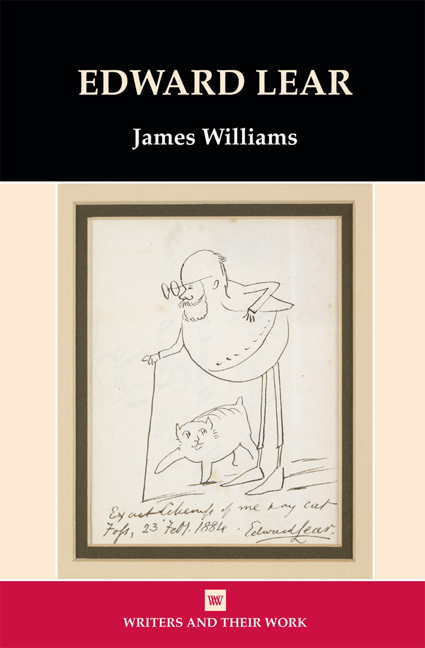Introduction
Summary
‘It was Edward Lear, I believe,’ W. H. Auden remarked in his inaugural lecture as Professor of Poetry at Oxford, ‘who said that the truest test of imagination is the ability to name a cat’. When he came to publish the piece in his collection The Dyer's Hand, Auden added a footnote: ‘I was wrong: it was Samuel Butler.’ It seems that Auden was not quite as familiar with Lear as he thought.
This wasn't the first time that Lear had been the subject of a case of mistaken identity: in his lifetime he was taken for, among other people, the Earl of Derby and Lord Palmerston. Auden's mistake was born not out of ignorance but rather out of a sense of familiarity that proved to be deceptive. Lear's famous selfportrait ‘How Pleasant to Know Mr Lear’ is archly knowing about the vagueness, and vagaries, of presumed acquaintance:
‘How pleasant to know Mr Lear!’
Who has written such volumes of stuff!
Some think him ill-tempered and queer,
But a few think him pleasant enough.
(428)
The first line, in quotation marks, was a remark reported to Lear by a friend in San Remo, the Italian town where he lived out the last years of his life. So Lear's most celebrated autobiographical poem turns out, on closer inspection, to be self-revealing only obliquely, in the course of elaborating upon a stranger's breezy, assumed knowledge of his life and character. This raises doubts, like the doubt that hangs over the phrase ‘such volumes of stuff’: is that ‘stuff’ as in ‘stuff and nonsense’ (OED 8b)? Or as in ‘any collection of things about which one is not able or willing to particularize’ (OED 8e)?
It is easy to assume that we know Mr Lear, especially if we were exposed to his poetry in childhood and haven't returned to it since. This book is offered as an introductory study of Lear but even more as a reintroductory study, an invitation to look again, and more closely, at a poet we might think we know and around whom various easy and comfortable interpretations have come to accrue over time.
- Type
- Chapter
- Information
- Edward Lear , pp. 1 - 12Publisher: Liverpool University PressPrint publication year: 2018



